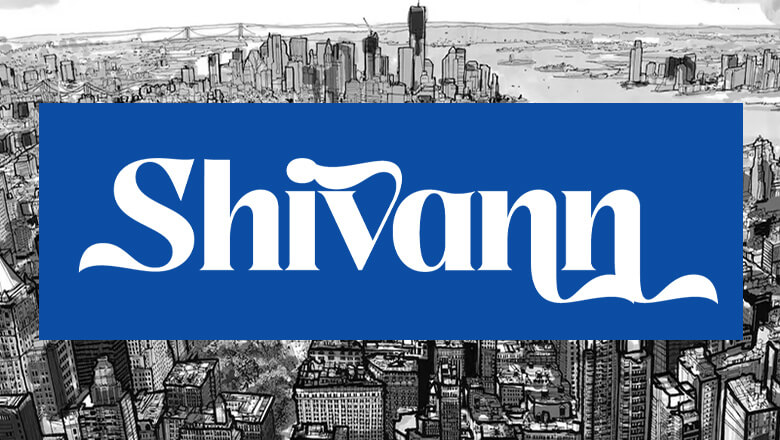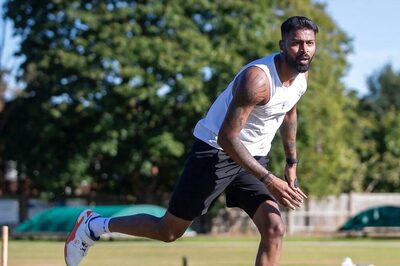
views
Meaning of Monk Mode
Monk mode is a period of intense focus set aside for a task or goal. People use monk mode as a mindset, lifestyle, and productivity strategy. During monk mode, you get rid of all distractions (including non-essential tech) for a set amount of time and commit yourself to completing a specific task or goal. Removing the non-essentials of daily life allows you to enter a state of concentration that can significantly boost productivity. The term “monk mode” is inspired by the simplicity of monastic life, which is free of the constant interruptions and hyperconnectivity most of us experience daily. The amount of time you spend in monk mode–minutes, hours, days, or even months–is completely up to you. “Monk mode” has surged in popularity in recent years and gone viral on TikTok, where videos with the hashtag #monkmode have received millions of views.
Benefits of Monk Mode
Increased productivity Getting rid of distractions, improving your focus, and setting clear goals is extremely efficient and allows you to make the most of your work time. Many people say they're able to achieve a lot more and in less time when they’re working in monk mode.
Improved self-discipline Monk mode is an excellent way to learn skills like time management, sustained focus, and how to overcome distractions. Honing these skills transforms you into an efficient and productive worker who knows how to get things done. You can use these skills in your personal life, too.
Clarity of purpose Taking the time to organize your priorities allows you to set very clear goals for yourself. Once a goal is clear in your mind, it’s much easier to tackle it. Not only will you achieve more when you’re in monk mode, but you’re also likely to gain perspective and approach work in a more intentional way.
Enhanced creativity When your space is distraction-free and you’re able to fully engage with the present, creative juices tend to start flowing more quickly and easily. Monk mode creates an environment that supports creative thinking, enhances your natural skills, and gives you space to develop innovative ideas.
Reduced stress It can be stressful to have projects looming over you, and this kind of stress is often one of the main culprits behind procrastination. Monk mode encourages you to create clear, specific goals and come up with a methodical plan for achieving them. With a plan in place to guide you, you’ll feel more relaxed and prepared to handle the work.
Increased confidence Using monk mode can boost your confidence in a major way because working hard and achieving goals feels amazing. Making progress and enjoying a sense of accomplishment is also very motivating. You'll feel empowered to keep setting and pursuing new goals.
Potential Risks of Monk Mode
Social isolation Monk mode requires you to isolate yourself in order to focus completely on the task at hand. Doing this in small doses is perfectly fine, of course, but if you’re spending a lot of time in monk mode, you run the risk of isolating yourself from your friends and loved ones.
Increased stress Monk mode can help reduce stress overall, but long periods of sustained focus are taxing for the body and mind. There will also be days when the work doesn’t come as easily as usual (which is totally normal), and you may start pressuring yourself to work harder and faster. Remember: monk mode should reduce stress, not create it. Stress can manifest in your regular life, too. Everyone has responsibilities–paying bills, eating a healthy diet, exercising, nurturing relationships, etc. Spend too much time in monk mode can cause tunnel vision, and some folks may find themselves dropping the ball in other areas of life.
Potential burnout The body and mind need rest to thrive, so balance is key when it comes to monk mode. To avoid burnout, be sure to establish clear boundaries and realistic goals for monk mode sessions. Outside of monk mode, prioritize getting rest, relaxation, social interaction, and healthy meals. It can help to break larger goals up into smaller tasks that you can knock out piecemeal. That way, you’re constantly achieving goals and making progress without burning yourself out. Life coach Guy Reichard explains, "If we’re too task and achievement oriented, we might not be getting all our needs met and some of those [needs] include having some fun, some rest, some recreation, some private down time, some meditation, time to simply be present."
How to Get into Monk Mode
Choose a timeframe for your session. The duration of each sprint is completely up to you–it could be hours to weeks or even longer, depending on what you want to accomplish. Consider your goals, workload, and energy levels when choosing how long a sprint should be–remember to be realistic and factor in breaks so you don’t overwork yourself. If you have a lot of work to do and limited free time, you may want to do longer sprints whenever you can fit them in. For example, if you have a project to complete and a free weekend coming up, use that for a monk mode sprint. If you struggle to concentrate for long stretches, doing frequent shorter sprints might be better. For example, dedicate 1-2 hours a day to monk mode and spread those sprints out over a few weeks. You can complete your project in smaller chunks.
Set clear goals for each session. Create goals that are specific and measurable so you can work methodically and track your progress. If you have a large goal and limited time for monk mode sprints, break up your work into smaller tasks that you can complete in shorter timeframes. That way, you're constantly completing tasks and whittling away at your larger goal. For example, to study for an exam, work in shorter sprints (1-2 hours per day) for a week leading up to the test. For one sprint, your goal might be to review chapter 1 in your textbook and make flashcards. For the next sprint, review the flashcards, then go over chapter 2, making more flashcards along the way.
Prioritize the tasks required to achieve each goal. Create a schedule for each monk mode session and allot a specific amount of time for each task. Generally, try to devote the most time and energy to key tasks that get you closer to your goal, but that doesn’t mean ignoring the little things. After scheduling critical tasks, allot some time to knock out the easier stuff. Remember: just because it’s easy doesn’t mean it isn’t time-consuming! Consider using a technique like the Pomodoro method, where you work in 25-minute increments punctuated by short breaks.
Schedule short breaks in each monk mode session. Taking breaks during periods of deep focus is key for avoiding burnout. As you’re assigning tasks to time frames, include short breaks (10-15 minutes) throughout the day, especially between the harder tasks. Use that time to grab a snack or a drink, stretch your legs, or get some fresh air. For longer stretches, be sure to schedule in 30 minutes to an hour for meals, as well. If you’re planning to go into monk mode for days or weeks, it’s important to schedule in sleep and recovery times, too. Be intentional with your scheduling so you aren’t neglecting your well-being.
Eliminate all distractions before each session starts. Most people are juggling a steady stream of texts, emails, and notifications every day, and these constant interruptions severely impact productivity. Before a sprint begins, mute your notifications, turn off your cell phone, close unnecessary tabs on your browser, and create a quiet, organized space for yourself. If there are any other distractions you deal with, try to reduce or get rid of them.
More Productivity Hacks to Improve Efficiency
Use timers to help you stay on schedule. When you’re in deep focus, it’s easy to work through past the time you allotted for a specific task, which then throws off your whole schedule and impacts your overall progress. You can use an old-school kitchen timer or set a timer on your smartphone–just make sure you don’t open any apps or check your notifications when you’re resetting it!
Simplify your to-do list on low energy days. You aren’t a machine–some days you might have less energy or focus than usual. That’s totally normal. If you try to push through a bad day, you might end up getting frustrated with yourself and getting nothing done. On low energy days, adapt your schedule and switch to simpler tasks that you have the bandwidth for.
Avoid multitasking during monk mode sessions. It may seem like multitasking will help you get more done, but it usually just slows you down and reduces the quality of your work. Focus on doing one thing at a time and give it your all. When you give a task your full attention, you’ll do it better and faster.
Declutter your workspace regularly. When you’re in deep focus, you aren’t paying much attention to staying organized–your desk can quickly become littered with documents, books, supplies, and coffee cups. Clutter clouds your mind and makes it harder to concentrate, so try to tidy up your workspace every time you take a break.
Remind yourself to step back and look at the bigger picture. This is especially helpful when you get stuck on something and you’re struggling to move forward. Instead of forcing yourself to keep wrestling with it, try taking a step back instead. Walk around the block or switch to an easier task for a while. Solutions often come when you give your brain a little space to process the problem.



















Comments
0 comment